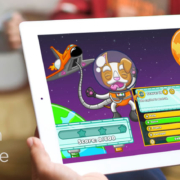Unveiling the Power and Fury of Hurricanes: Nature’s Most Formidable Storms
Hurricanes, often referred to as nature's fury unleashed, are awe-inspiring yet terrifying meteorological phenomena. These powerful storms, with their swirling winds and torrential rains, have captured the imagination of generations. In this comprehensive guide, we will delve into the world of hurricanes, explore their categorization, understand their inner workings, and even discover the stories behind some of the most famous hurricanes like Hurricane Katrina and Hurricane Carolina. Let's embark on a journey through the heart of these remarkable natural wonders.
H2: What is a Hurricane?
At its core, a hurricane is a massive storm characterized by strong winds, heavy rainfall, and a low-pressure center. Hurricanes, also known as cyclones or typhoons in different parts of the world, are tropical storms that originate over warm ocean waters.
H2: The Anatomy of a Hurricane
Understanding the components of a hurricane is essential to grasp the enormity of these storms:
Eye: The center of a hurricane is called the "eye," which is typically calm and clear.
Eyewall: Surrounding the eye is the eyewall, where the most intense winds and rainfall occur.
Rainbands: Spiraling outward from the eyewall are rainbands, which produce heavy rains and strong winds.
H2: Categorizing Hurricanes: Saffir-Simpson Hurricane Wind Scale
Hurricanes are classified into categories based on their wind speeds, as defined by the Saffir-Simpson Hurricane Wind Scale. The scale ranges from Category 1 (weakest) to Category 5 (strongest). Here's a breakdown:
Category 1: Winds of 74-95 mph.
Category 2: Winds of 96-110 mph.
Category 3: Winds of 111-129 mph.
Category 4: Winds of 130-156 mph.
Category 5: Winds exceeding 157 mph.
H2: The Devastation of Hurricane Katrina
Hurricane Katrina, one of the deadliest and costliest hurricanes in U.S. history, struck the Gulf Coast in 2005. It caused catastrophic flooding in New Orleans and left a trail of destruction in its wake.
H2: Hurricane Carolina: A Tale of Resilience
Hurricane Carolina, though not as well-known as Katrina, made landfall in the Carolinas in 1989. This hurricane tested the resilience of the coastal communities as they faced its powerful winds and rain.
H2: Hurricane Names and the World of Meteorology
Hurricanes are given names to make communication easier. The World Meteorological Organization (WMO) maintains lists of names for Atlantic, Pacific, and Indian Ocean storms. Names are used in rotation and are retired if a hurricane is particularly deadly or destructive.
H2: How Do We Track Hurricanes?
Meteorologists use advanced technology, including hurricane radar and satellite imagery, to track and monitor the development and movement of hurricanes. This data helps in issuing timely warnings and forecasts.
H2: FAQs About Hurricanes
Q1: What causes a hurricane to form?
A1: Hurricanes form over warm ocean waters when there is a combination of warm, moist air, and the Coriolis effect, which causes the air to spin and create a low-pressure system.
Q2: Are there any educational resources to help kids learn about hurricanes?
A2: You can explore educational materials and diagrams related to hurricanes on ESL Games Plus. It's a valuable platform for teaching kids about the science of hurricanes.
Q3: How can I prepare for a hurricane and stay safe during one?
A3: To prepare for a hurricane, create an emergency kit, stay informed about weather updates, and follow evacuation orders if necessary. It's crucial to have a plan and stay safe during these powerful storms.
Q4: What is the definition of a hurricane, and how does it differ from other storms?
A4: A hurricane is a tropical cyclone characterized by strong winds, low pressure, and heavy rainfall. It differs from other storms due to its specific formation over warm ocean waters and the potential for extreme intensity.










